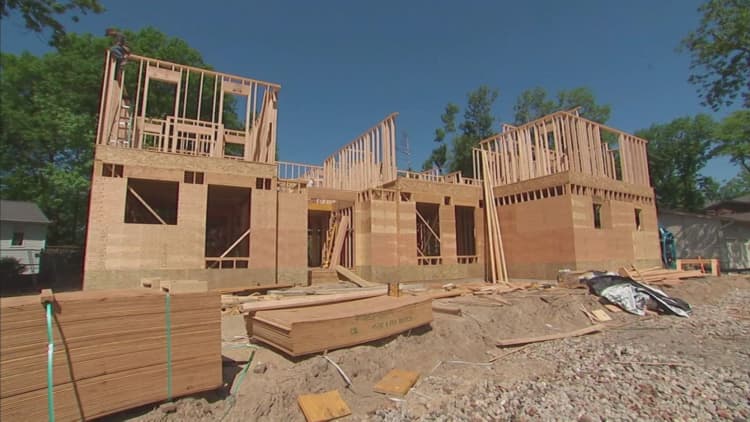
All signs and numbers point to a huge year for the construction industry. Even in December, with much of the nation frozen, the construction industry added 30,000 jobs, according to the Bureau of Labor Statistics.
For all of 2017, construction added 210,000 jobs, a 35 percent increase over 2016.
Construction spending is also soaring, rising more than expected in November to a record $1.257 trillion, according to the Commerce Department. That was up 2.4 percent annually. Spending increased across all sectors of real estate, commercial and residential, with particular strength in private construction projects. The only weakness was in government construction spending.
Construction firms are clearly looking to hire more workers. Three-quarters of them said they plan to increase payrolls in 2018, according to a new survey from the Associated General Contractors of America. Industry optimism for all types of construction, measured by the ratio of those who expected the market to expand versus those who expected it to contract, hit a record high.
"This optimism is likely based on current economic conditions, an increasingly business-friendly regulatory environment and expectations the Trump administration will boost infrastructure investments," said Stephen Sandherr, the association's CEO.
Contractors are most optimistic about construction in the office market, which has seen little action since the recession. Transportation, retail, warehouse and lodging were also strong in the survey. Respondents were less encouraged by the multifamily apartment sector, which is just coming off a building boom.
The biggest concern for the industry is the severe shortage of labor. This is slowing what could be a far more robust recovery in the residential housing market, which desperately needs more homes. December's employment report did show the biggest monthly rise in residential construction jobs of 2017, but homebuilders are still looking for skilled labor. Housing starts are increasing slowly, but they are not even close to meeting the strong demand.
Construction firms are adding jobs, but workers are also leaving the industry, aging out. In 2017, a net 190,000 new workers entered the construction industry, far lower than the prior three-year average of 284,000 annual additions. The National Association of Realtors, which is essentially begging builders for more homes, points to this as a huge problem and is appealing to Congress for new policies to ease the worker shortage.
"There needs to be serious consideration in allowing temporary work visas until American trade schools can adequately crank out much needed, domestic skilled construction workers," NAR chief economist Lawrence Yun wrote in response to the monthly employment report.
WATCH: Tech and the future of the construction industry



